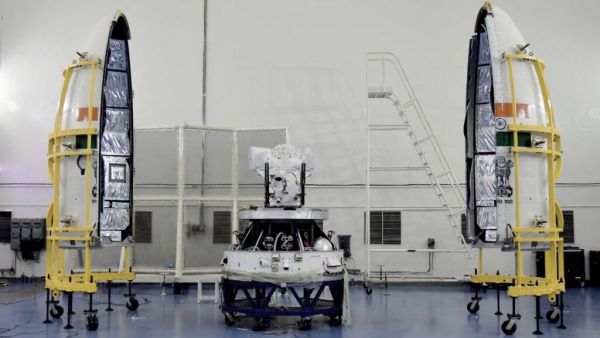
India’s space sector is taking a giant leap forward, with the Indian Space Research Organisation (ISRO) transferring its Small Satellite Launch Vehicle (SSLV) technology to Hindustan Aeronautics Limited (HAL) for ₹511 crores.
This is the first-of-its-kind deal, facilitated by the Indian National Space Promotion and Authorization Centre (IN-SPACe), marking a historic moment for India’s commercial space industry. SSLV technology is significant and will help India shine in the global space economy.
The SSLV is a compact, cost-effective rocket designed by ISRO to launch small satellites weighing up to 500 kg into Low Earth Orbit (LEO), which is about 500-700 km above Earth. Unlike ISRO’s larger rockets like the Polar Satellite Launch Vehicle (PSLV) or Geosynchronous Satellite Launch Vehicle (GSLV), the SSLV is smaller, cheaper, and faster to build and launch. It is like a “taxi” for small satellites, offering quick and affordable access to space.
The SSLV is a three-stage rocket, meaning it has three parts that work together to push the satellite into orbit. The first stage is powered by solid fuel; it gives the rocket the initial thrust to lift off from the ground. The second stage also uses solid fuel to keep the rocket moving higher into the atmosphere. The third stage uses liquid fuel for precise control to place the satellite in the exact orbit.
“A unique feature of the SSLV is its Velocity Trimming Module (VTM), which fine-tunes the rocket’s speed and direction in the final stage, ensuring the satellite reaches its destination accurately. The rocket is about 34m tall, 2 m wide, and can carry payloads of 10-500kg. It is designed for “launch-on-demand,” meaning it can be prepared and launched quickly, sometimes in just a few days, compared to months for bigger rockets, ” explained space analyst Girish Linganna.
The SSLV technology is a game changer because it costs much less to build and launch than larger rockets. This makes it attractive for small satellite operators, including startups, universities, and private companies.
“The rocket’s simple design allows it to be assembled and launched in a short time, meeting the growing demand for frequent launches. The SSLV has a low turnaround time and can be assembled within a fortnight, allowing the space agency to provide launch-on-demand service,” added Linganna.
Small satellites, or “smallsats,” are increasingly used for communication, weather monitoring, navigation, and scientific research. The SSLV can cater to this global market, offering a reliable and low-cost option.
By transferring SSLV technology to HAL, ISRO is enabling a private company to build and sell launch services. This is one of the most comprehensive technology transfers by ISRO, as HAL will gain the know-how to independently design, build, and launch SSLVs.
Under the agreement, ISRO will train HAL’s team for two years to master SSLV technology. HAL will build two SSLVs during this period, with ISRO’s guidance at both ISRO and HAL facilities. After two years, HAL will have the skills and rights to produce and launch SSLVs on its own. HAL will also pay ISRO ₹511 crores in phases for the technology and training. This deal is a big step towards making India’s space sector more private-sector-driven, as HAL can now offer SSLV launches to global customers.
The global space economy is expected to reach $1 trillion by 2040, and India aims to capture a $44 billion share by 2033. The SSLV technology transfer to HAL is a key step in this direction. HAL can offer SSLV launches to international clients, including companies building small satellites for internet services (like Starlink), Earth observation, or scientific missions. This will bring revenue to India.
By involving companies like HAL, India is building a strong private space industry. This reduces ISRO’s burden, allowing it to focus on bigger missions like lunar exploration or human spaceflight.
Countries like the USA, China, and New Zealand already offer small satellite launch services. The SSLV gives India a competitive edge with its low cost and reliability.
The growth of the commercial space sector will create jobs for engineers, scientists, and technicians. It will also encourage startups and innovation in satellite technology.
SSLVs can launch satellites for India’s needs, such as rural internet, disaster management, and border security, while also serving global customers.